9 Brand Essentials Behind Every Thriving Business
At the foundation of every successful business lies a strong brand, carefully crafted with intention, creativity, and strategy.
Though some might consider the two synonymous, a brand is very different from a business.
A business is formulaic—it’s about putting the right systems, teams, and processes in place to operate successfully.
A brand, on the other hand, is emotional—it’s about putting the right visuals, words, and personality in place to create meaningful, memorable experiences for people.
A business without a brand is like a clock without a face. It has all the components needed to function but lacks the personality and unique details that a person looks for when choosing which one to buy and display in their home.
Just think for a moment: what’s the common denominator between companies like Nike, Patagonia, Apple, Coach, Peloton, Tesla, and Airbnb? They all thrive because they live in our minds as well-established, well-understood, and well-liked brands.
But what is a brand exactly?
We believe there are standard ingredients behind every thriving, memorable, meaningful, uniquely positioned brand.
At Overlap, we help clients build better brands by developing, refining, and optimizing the following nine ingredients:
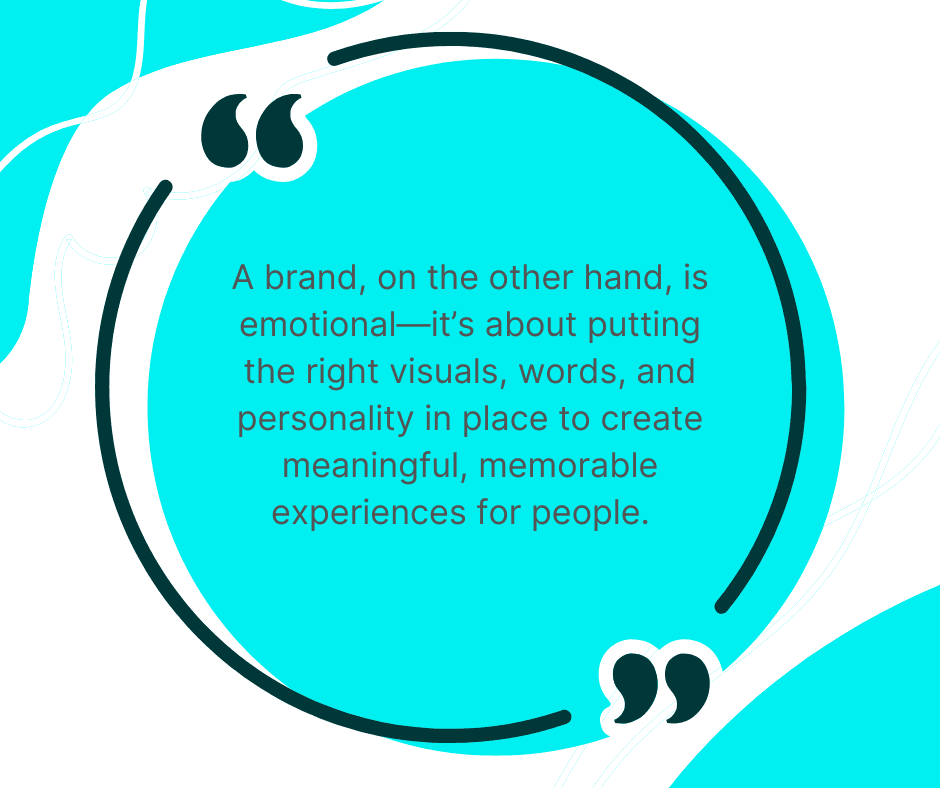
1. Brand Narrative
One of the first and most important brand essentials every business needs to create is a brand narrative.
A brand narrative is a story that helps your employees, partners, investors, customers, and prospects understand why you exist and how your existence impacts them.
Though often mistaken for one another, a brand narrative is different than a brand origin story.
A brand origin story helps prospective buyers, employees, or investors understand how your company came to exist. It usually starts with a realization or aha moment from a founder who witnessed or experienced a problem that they wanted to solve. A brand story is told to the audience looking back. It starts at the beginning and works its way back to the present moment in time.
A brand narrative helps prospective buyers, employees, or investors understand or accept a problem that exists in their own world, the journey they must take to solve that problem, and the reward that is waiting for them should they choose to journey with you. A brand narrative is told to the audience looking forward. It usually starts at the present moment and paints a picture of what the future looks like.
A brand narrative is a tool because it can be used both vertically and horizontally inside your organization.
For example:
- A leadership team might use a brand narrative to communicate a new strategic direction, court a potential investor, or launch a new product.
- An HR team might use a brand narrative to attract and recruit new talent looking for the right purpose-driven organization to help.
- A sales team might use a brand narrative to differentiate from competitors, cut through the noise, and nurture leads down the funnel.
- A marketing team might use a brand narrative to create awareness or demand around a product, service, or the company as a whole.
- An individual contributor might use a brand narrative to understand how the work they do bubbles up to a bigger mission or purpose.
Every brand narrative is built using the same key elements: a hero, an undeniable change affecting their life in some way, a proposed journey, an enemy, tools to make their journey easier, and a reward waiting for them should they succeed.
2. Strategic Messaging & Positioning
Strategic messaging refers to the all-encompassing messaging, statements, and copy you use when communicating your value propositions and differentiation to a broad audience.
Strategic messaging gives you and your team guideposts that help ensure the same message is being shared and communicated by everyone.
Strategic messaging can include a mission statement, a vision, guiding beliefs or principles, key value propositions, differentiation statements, taglines, and brand words.
Positioning refers to the specific messaging, statements, and copy you use when communicating your value propositions and differentiation to key personas, ICPs, and verticals.
With positioning, your core value propositions stay the same, but they get communicated differently depending on which audience you’re trying to reach.
There are strategic reasons why you should take the time to create strategic messaging and positioning for your brand. Here are a few:
Reason #1: Speed. Having strategic messaging and positioning allows you to move faster when creating new campaigns or testing new channels. Your team no longer needs to recreate the wheel each time they need to communicate with an audience.
Reason #2: Consistency. Having strategic messaging and positioning ensures that your teams are communicating the same message in the same way to prospective customers, employees, and partners.
Reason #3: Scalability. Having strategic messaging and positioning makes it easier for you to scale your organization. By having a source of truth in place, you can quickly onboard new team members and give them the tools they need to succeed early in their roles.
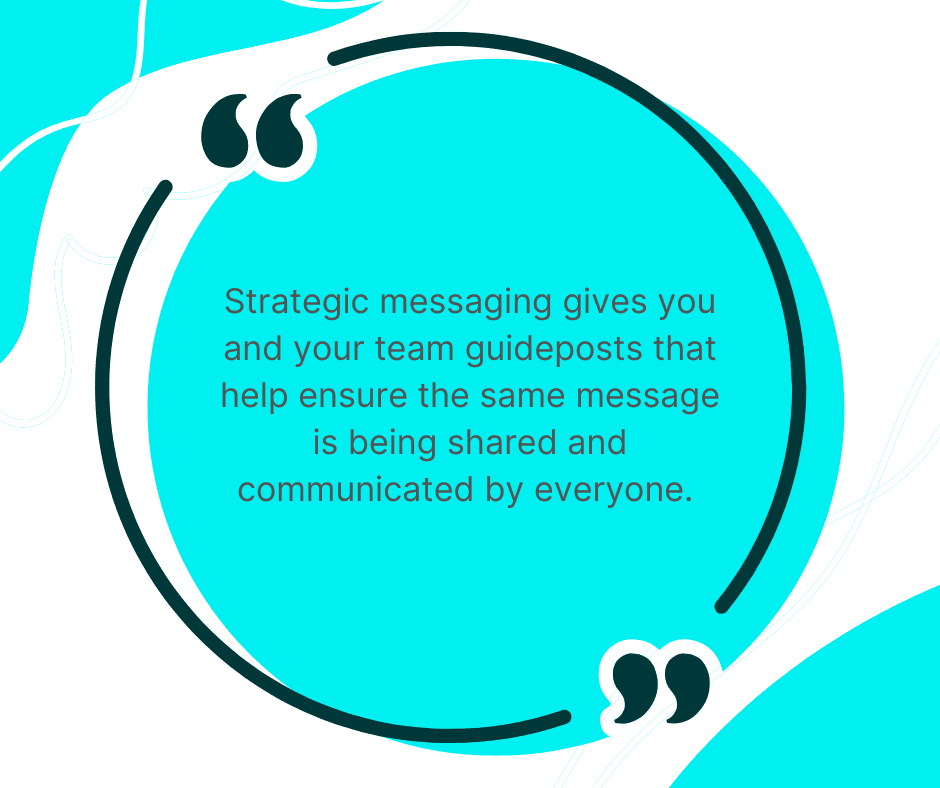
3. Visual Style Guide
Probably the most apparent brand ingredient every business needs is a visual style guide. This guide sets the standard for how your brand should look and feel when being represented in both physical and digital spaces.
A visual style guide is a reference point and another source of truth that your team can rely on when updating your website, creating sales and marketing materials, and testing new channels.
Most visual style guides will include requirements and guidelines related to how to use your logo, brand colors, fonts, and other brand assets like photos, audio, and video.
These guides can get pretty technical, but for good reason: you only get one chance to make the right impression when people encounter your brand for the first time. A style guide helps you create a consistent experience for people who encounter your brand no matter where they see it—in an email campaign, a Facebook ad, a billboard, your website, or inside a printed trade magazine.
A good visual style guide will also give readers hints about your brand personality and brand differentiation. They present your brand in a memorable, interesting, and unique way.
4. Personality & Voice
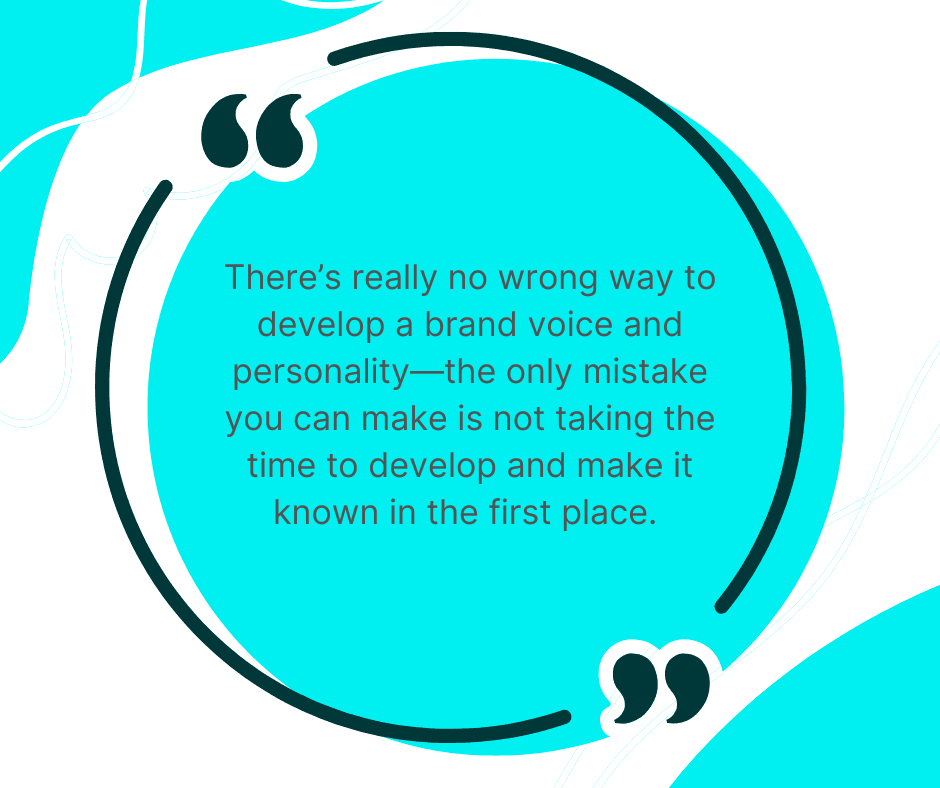
Because business still happens (for the most part) between human beings, brand personality and voice both remain important ingredients of an effective brand.
Brand voice and personality refer to the way you choose to communicate with your audience. It’s something you intentionally create when building your brand. The brand voice and personality you define will depend on the type of person you’re trying to attract and communicate with.
For example, if you’re selling products to teenagers or young adults, the way you communicate will look a lot different than if you were selling to middle-aged women. You’d probably choose to be more informal with your language and writing style when communicating with a younger audience.
If you’re selling technology to Fortune 500 companies, on the other hand, your brand voice and personality may look and sound more formal, direct, and professional.
It’s worth noting that brand personality isn’t just about what you sound like—it’s also about what you look like. Colors, textures, shapes, and photography can all influence how your brand personality is perceived by your audience.
The personality of your team can also shape and influence the personality of your brand. A more laid-back team might lead to a more laid-back brand voice and personality. An edgy, no-nonsense team might lead to a more punchy, direct brand voice and personality.
There’s really no wrong way to develop a brand voice and personality—the only mistake you can make is not taking the time to develop and make it known in the first place.
5. Customer Insights
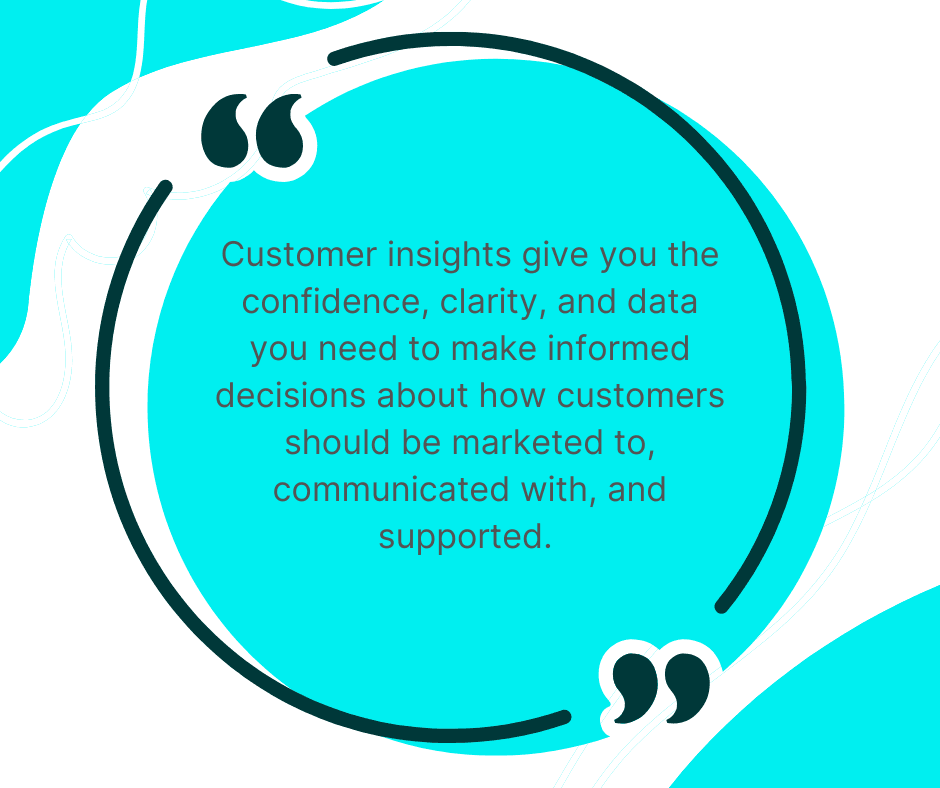
One element that many companies neglect when creating a brand is customer insights.
Customer insights are stories, testimonials, and data that help you and your team better understand the person or people you’re trying to reach and help.
Without customer insights, you can build entire strategies, features, and products based on assumptions alone.
Customer insights help you make informed decisions based on real, applicable data and information about who your customers are, what they care about, how they make decisions, what they are motivated to do, what obstacles stand in their way, and what rewards are most meaningful to them.
There are a few different ways you can capture customer insights when building a brand. Here are some ways we do it at Overlap:
1. Discovery Interviews: 1-1 sessions with customers to ask questions in an effort to better understand their perspective.
2. Product Surveys: Group questionnaires sent to customers in an effort to understand common behaviors, beliefs, and opinions.
3. Market Research: Manual research performed in an effort to gather demographic information about a specific market or group of people.
3. Persona Workshops: Group exercises designed to uncover the most important characteristics of the different customers you’re trying to reach.
Customer insights give you the confidence, clarity, and data you need to make informed decisions about how customers should be marketed to, communicated with, and supported.
6. Core Beliefs
Every successful brand has core beliefs or core values that help shape the way people think, communicate, and work.
Core beliefs relate to the perspectives you have about your industry, your customers, and the solutions you provide.
Core values relate to the collective guiding principles your team uses in every interaction they have with each other and with customers.
At Overlap, we take clients through intensive exercises that help uncover core beliefs and core values so that they can be infused into the brand in a way that is both recognizable and memorable to customers, employees, and prospects.
7. Competitive Awareness
Some leaders encourage their people to avoid looking at what competitors are doing because they don’t want their teams to focus too much time on something that they can’t control.
We think this is a mistake, and here’s why:
You might not care to take the time to look into what competitors are doing, but your prospective customers will. They’ll spend time evaluating you and the other brands in your space that can provide them with similar solutions to their problems.
The best thing you can do to build a better brand is to become more aware of what competitors are doing.
The purpose of being more aware of competitors isn’t so that you can copy them. The purpose is to understand how they’re communicating with your audience and see if you can find gaps and opportunities that allow you to communicate differently.
At Overlap, we help clients become more aware of competitors by performing Competitive Positioning Audits. In these audits, we look at the key positioning and differentiation of a client’s biggest competitors so that we can better understand the current landscape and help them build and implement strategies accordingly.
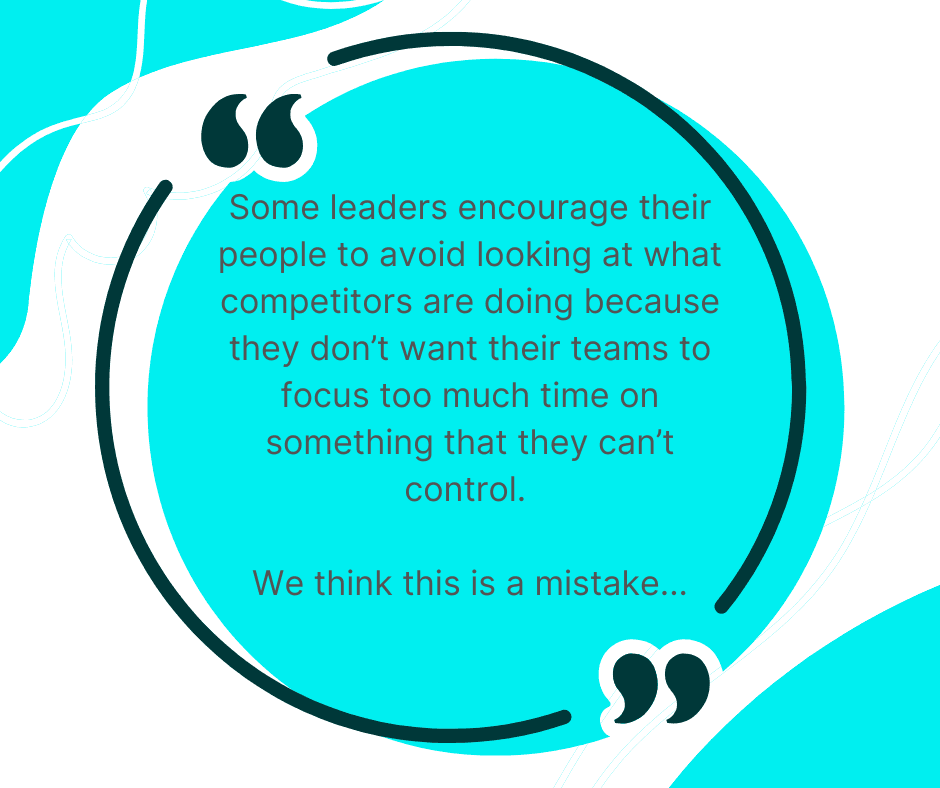
8. Employee Training & Resources
You can spend an entire year building brand assets and strategic frameworks, but none of it matters unless you can give your team the education and tools they need to make your brand stick in the real world.
This is a big miss with most companies—they spend all their time planning and none of their time training the people who can help make a unique and strategically developed brand come alive through their interactions with customers, prospects, and partners.
To combat this problem, we recommend the following:
- Create a Brand Book: A brand book is a physical document that you can put into the hands of your employees. It includes all the information they need to understand who you are, why you exist, why it matters, and how to communicate with your audience.
- Create a Day of Training: After your brand has been developed, plan a day of training with your team to reveal it and help them understand how to put frameworks, messaging, and assets into practice.
- Create a Brand Assets Folder: Create a living folder where you can store documents related to your brand. Add to this document over time and keep it from going stale. Make it easy for your employees to find and access.
Following these recommendations will help ensure that the brand you work so hard to define and create can be utilized by employees across your organization.
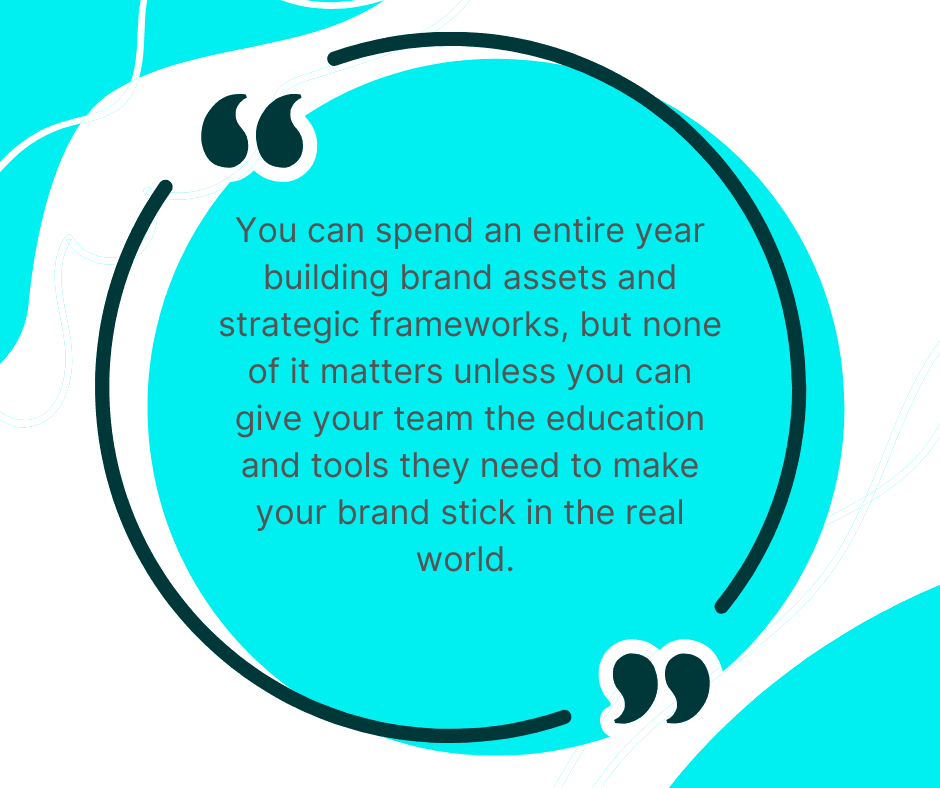
9. Activation & Management Strategy
Finally, make sure you have plans in place for how to activate and manage your brand over time. A brand is a living piece of your business. It will evolve and change over time. Make someone on your team the primary steward, advocate, or manager of your brand.
Their primary duties are to own the brand strategy, ensure brand consistency across teams and channels, and develop new tools, guidelines, and resources that help keep the brand alive.
Final Thoughts
Your brand is an important part of your organization. For it to thrive, it needs your attention, your time, your energy, and your creativity.
Without a brand, your business looks and feels like every other business your customer encounters in your industry.
With a brand, you become undeniably different.
Need help creating or refining your brand? Let’s talk.
